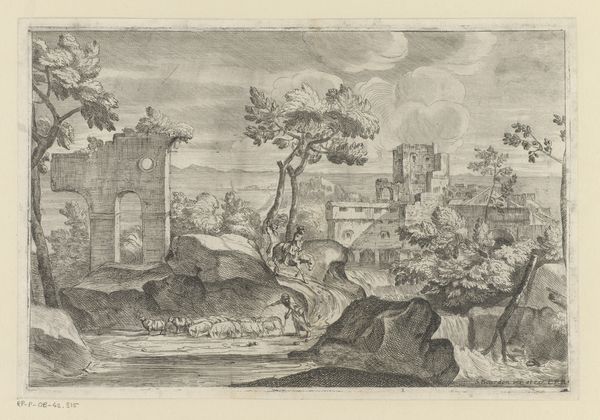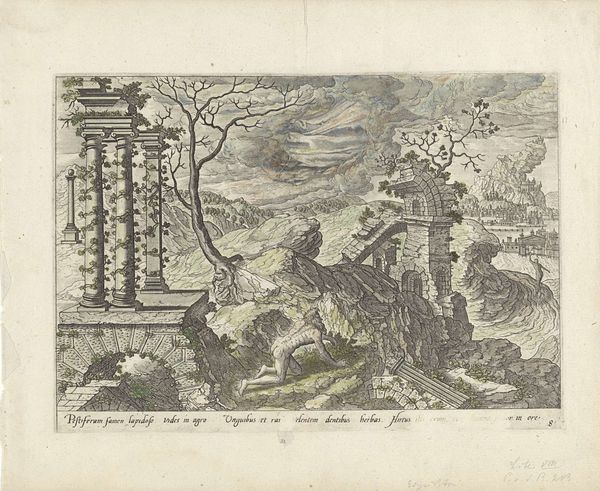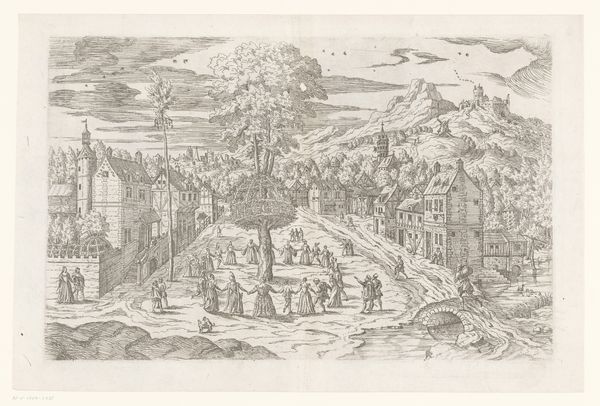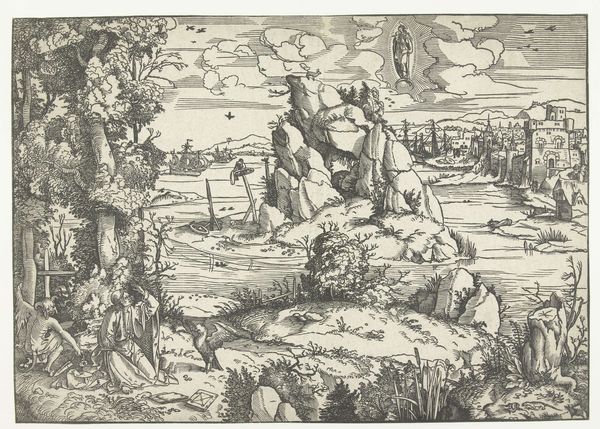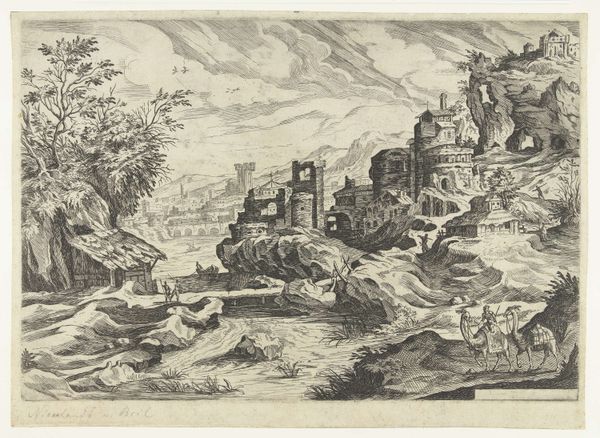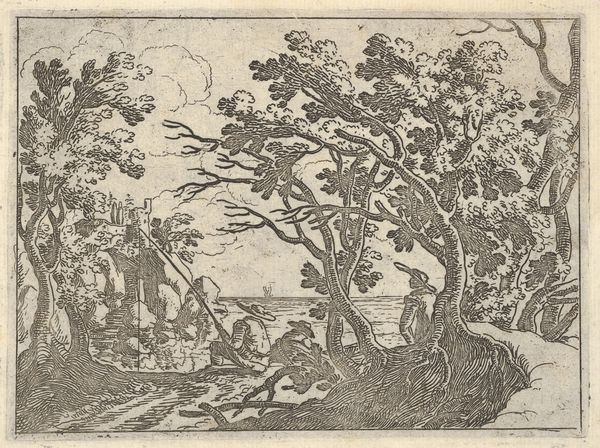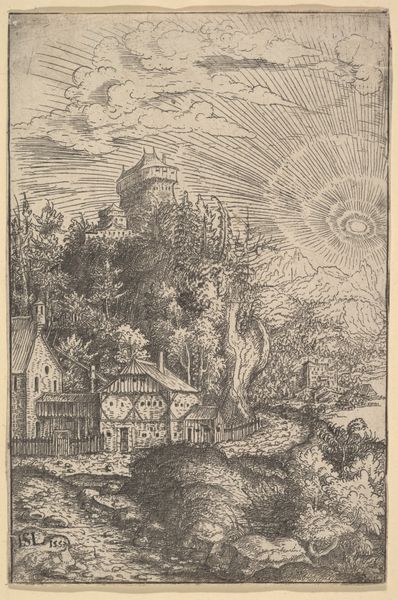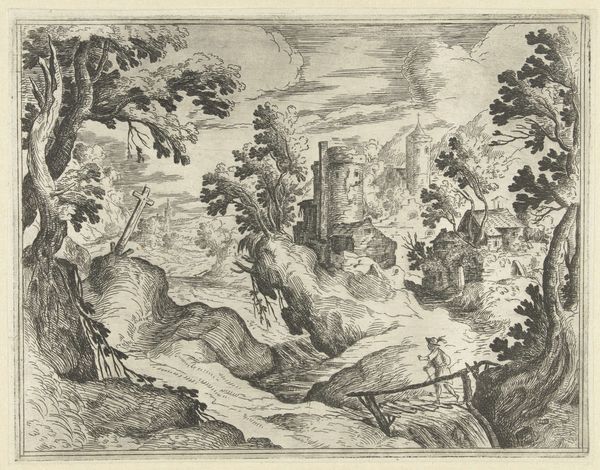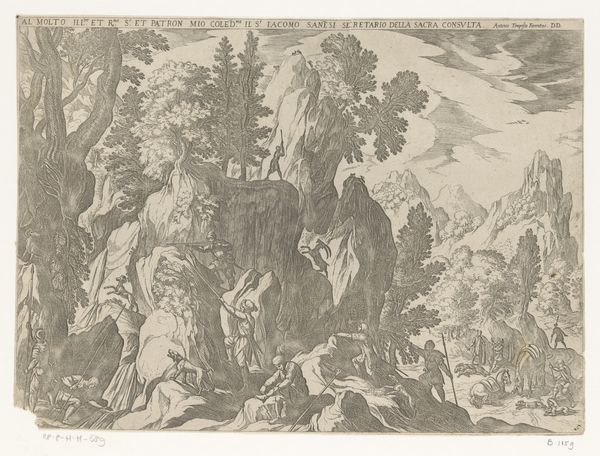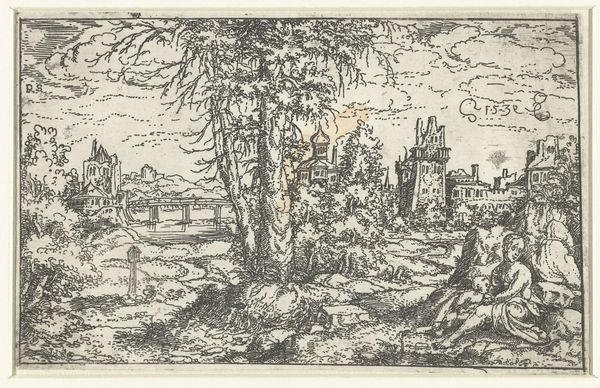
Landscape with buildings to the left and a bridge at right below 1615 - 1625
0:00
0:00
drawing, print
#
tree
#
drawing
#
pen drawing
# print
#
pen illustration
#
pen sketch
#
old engraving style
#
landscape
#
personal sketchbook
#
ink drawing experimentation
#
pen-ink sketch
#
pen work
#
sketchbook drawing
#
sketchbook art
#
building
Dimensions: Plate: 3 3/4 × 5 3/4 in. (9.5 × 14.6 cm) Sheet: 7 in. × 9 5/8 in. (17.8 × 24.5 cm)
Copyright: Public Domain
Curator: Before us is Remigio Cantagallina’s "Landscape with buildings to the left and a bridge at right below", likely created between 1615 and 1625. The artwork, a pen and ink drawing, resides at the Metropolitan Museum of Art. Editor: Immediately, I am struck by the starkness, almost a haunting quality, despite the seemingly tranquil subject matter. The linear precision feels more like an architectural rendering than a pastoral scene. Curator: Indeed. Note the almost obsessive rendering of architectural detail juxtaposed with the freer, almost gestural representation of nature. This opposition creates a dialogue, or perhaps a tension. The buildings, with their clear, distinct forms, signify human order. The trees suggest a wilder force, their dense, tangled canopies resisting the rigid structure of the architecture. Editor: I think that the symbolism may reside in the ruined aspect of the building on the left. We see that vegetation and disintegration are both evident within its architectural integrity, telling us the force of nature may have a upper hand, despite human will. The bridge is intact though, in comparison, connecting elements from both sides. Is it symbolic of passage? Curator: Symbolically, perhaps, although I read the bridge, with its clear lines and rational design, more as an assertion of human ingenuity—a taming, if you will, of the landscape. Its construction acts almost as a geometrical challenge to the undulating forms of nature surrounding it. Editor: The scale plays an interesting role. Everything is rendered in the same high level of detail, from the foreground rocks to the distant hills. Curator: A flattening effect occurs from this precise rendition. A uniformity overrides any implied emotionality and it instead prioritizes a conceptual exercise of form. The linework is consistent throughout. The absence of dramatic tonal variation reinforces the sense of intellectual rather than emotional exploration. Editor: Yet the human presence, implied by the architecture, also hints at narratives, and cultural values, perhaps reflecting ideals of that period in history. Curator: Precisely, although the lasting effect of its architectural analysis may give clues as to how this could inform other creative forms in his oeuvre. The rigorous framework he established suggests not only an aesthetic intention, but a conscious study of shape and form that will provide a solid understanding of art theory, regardless of emotional associations. Editor: So even without color or a varied texture, a narrative of resistance or negotiation emerges from within a detailed pen and ink. Quite interesting, especially to observe those dialogues. Curator: A fitting insight, perhaps, to end our time at the composition, its lines offering lasting clues that are as relevant to its creator as they are for ourselves.
Comments
No comments
Be the first to comment and join the conversation on the ultimate creative platform.


